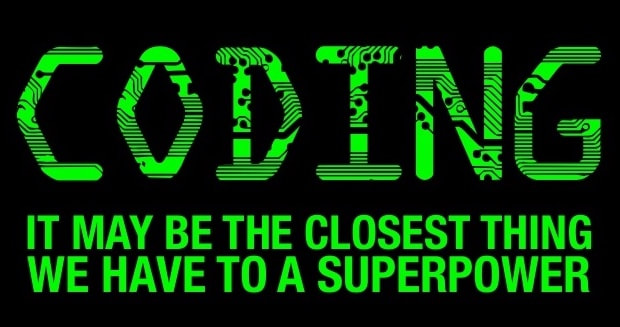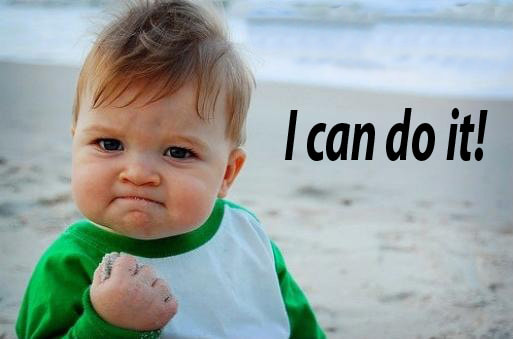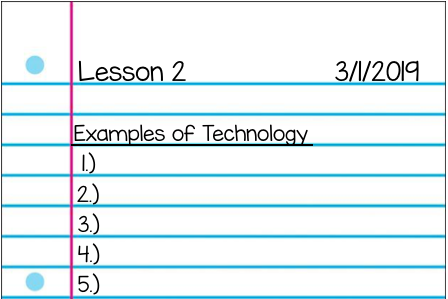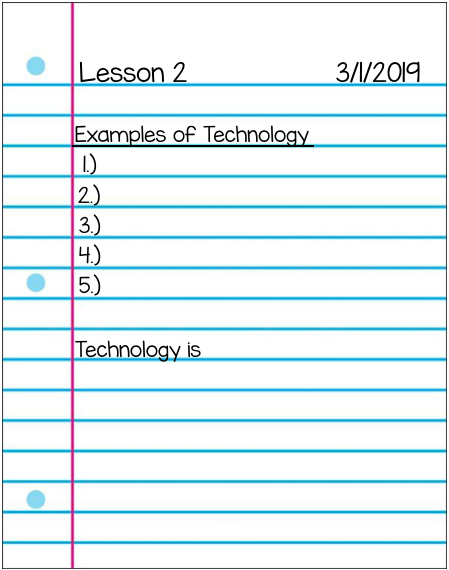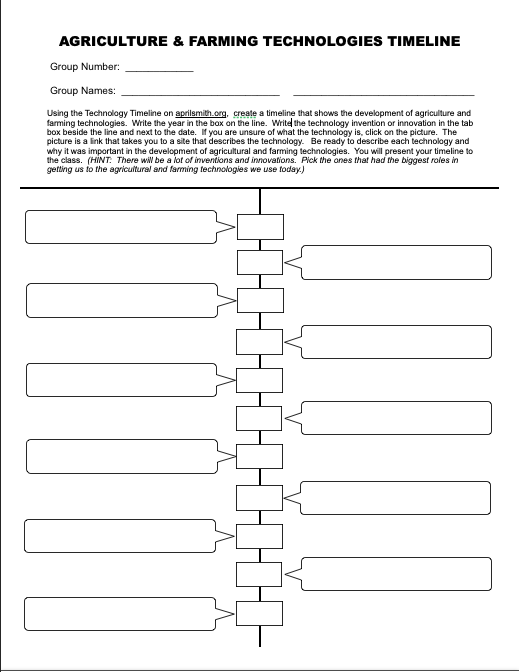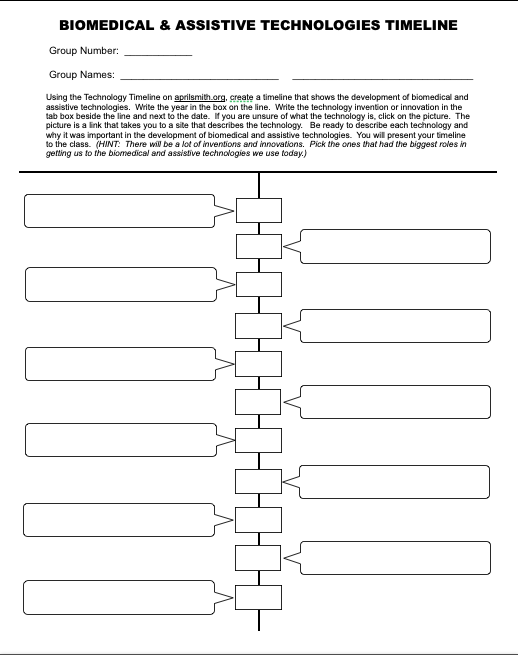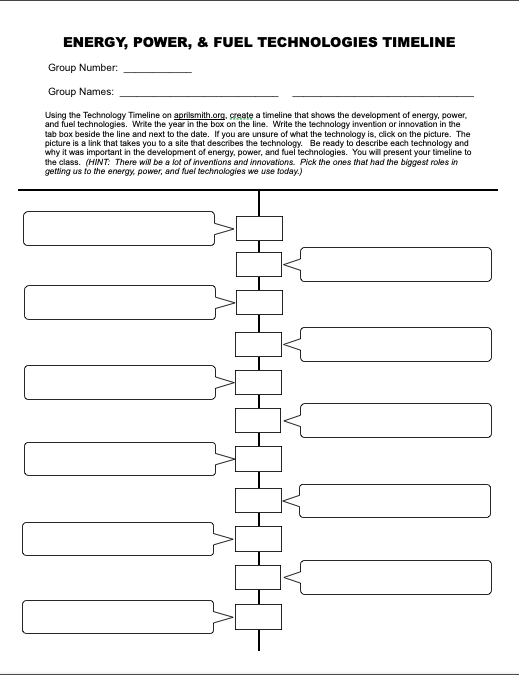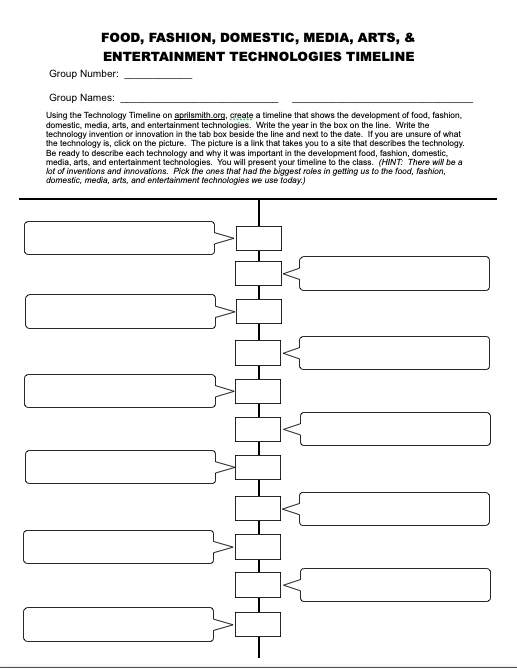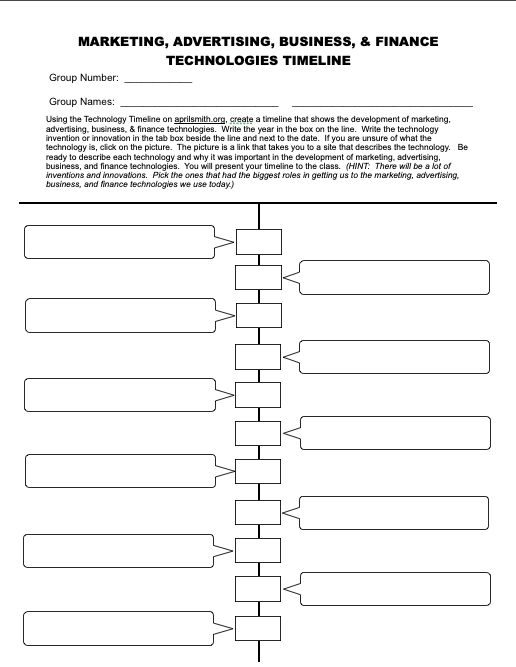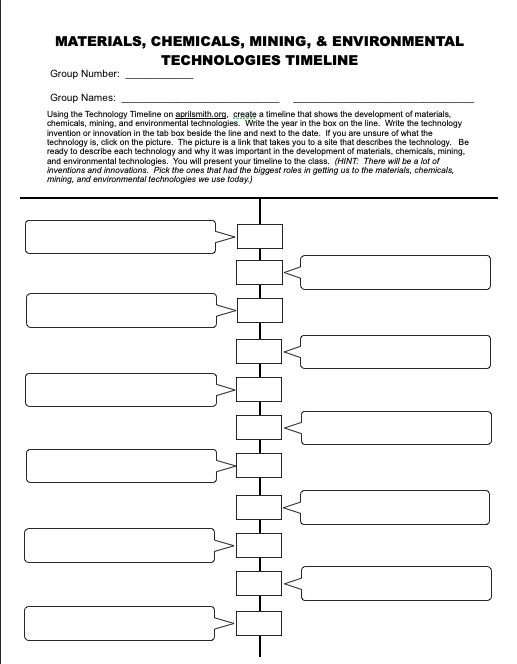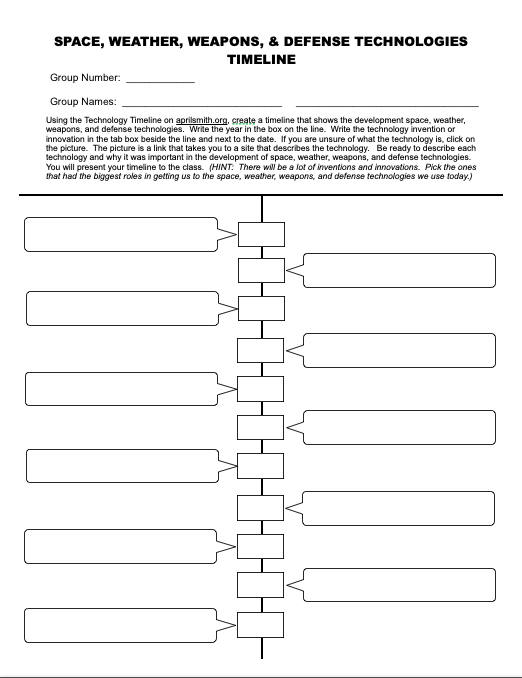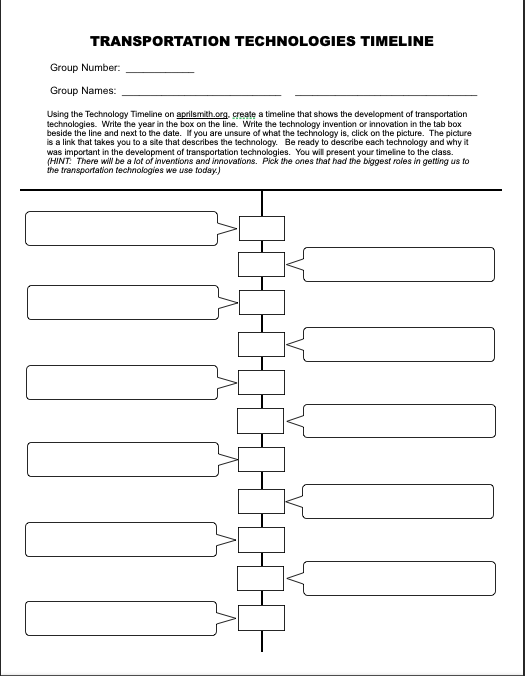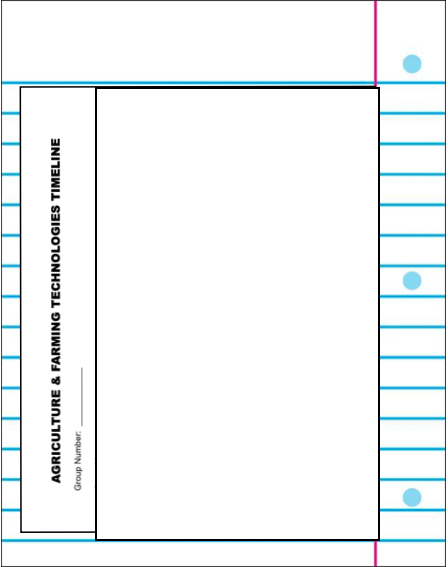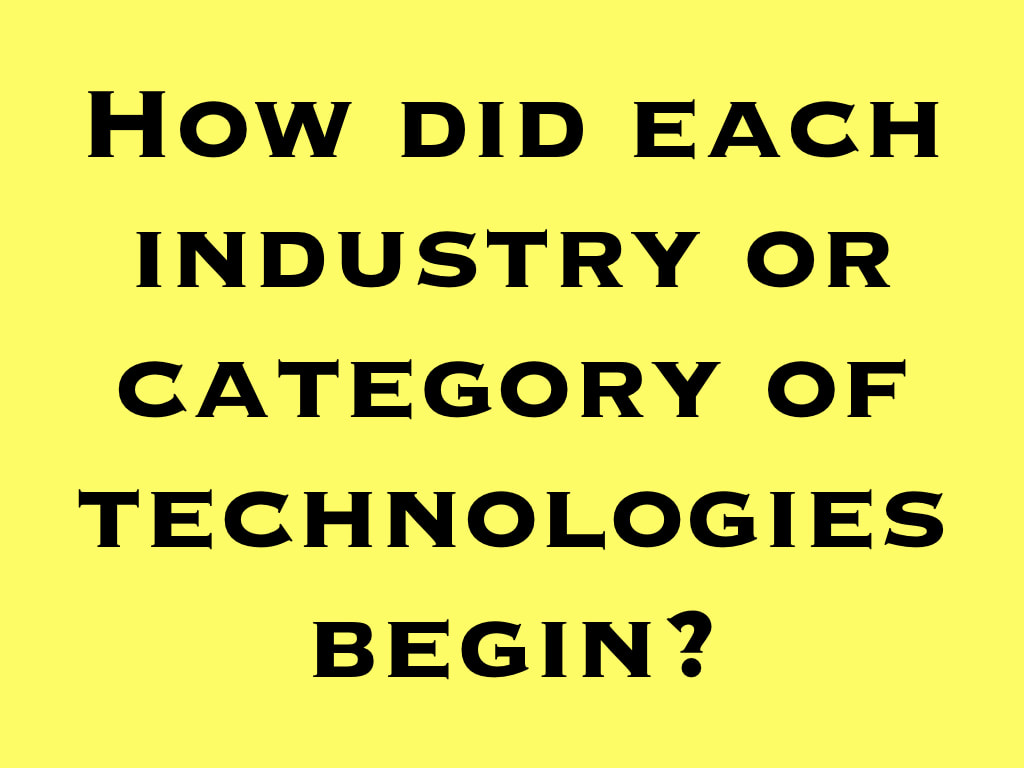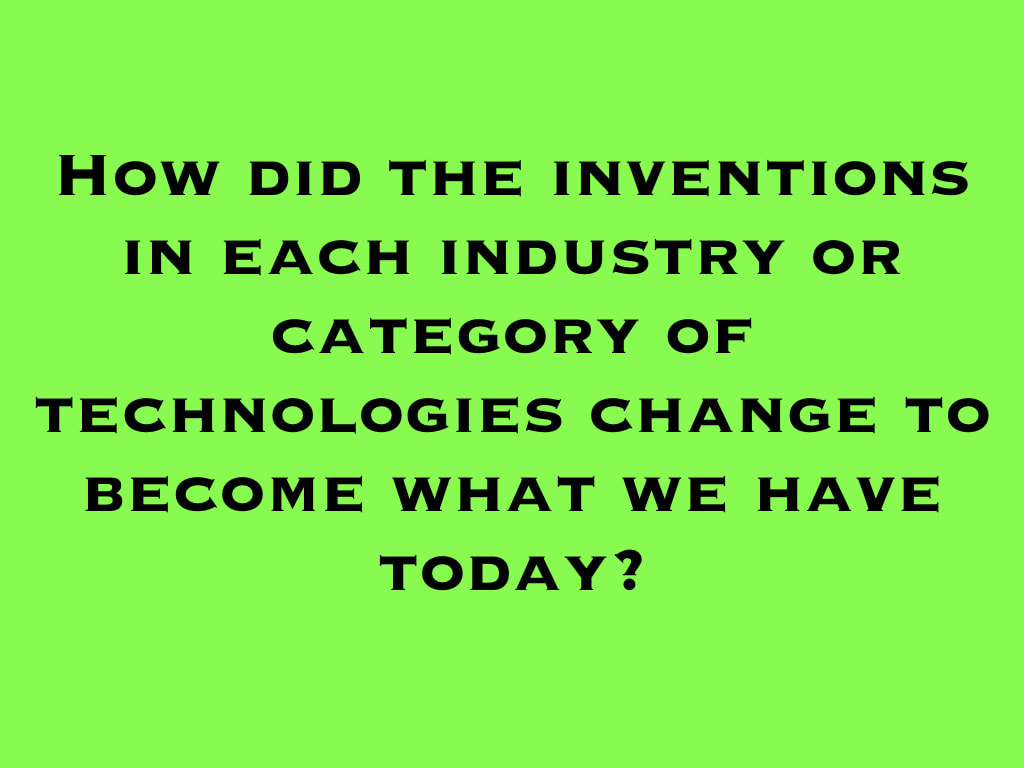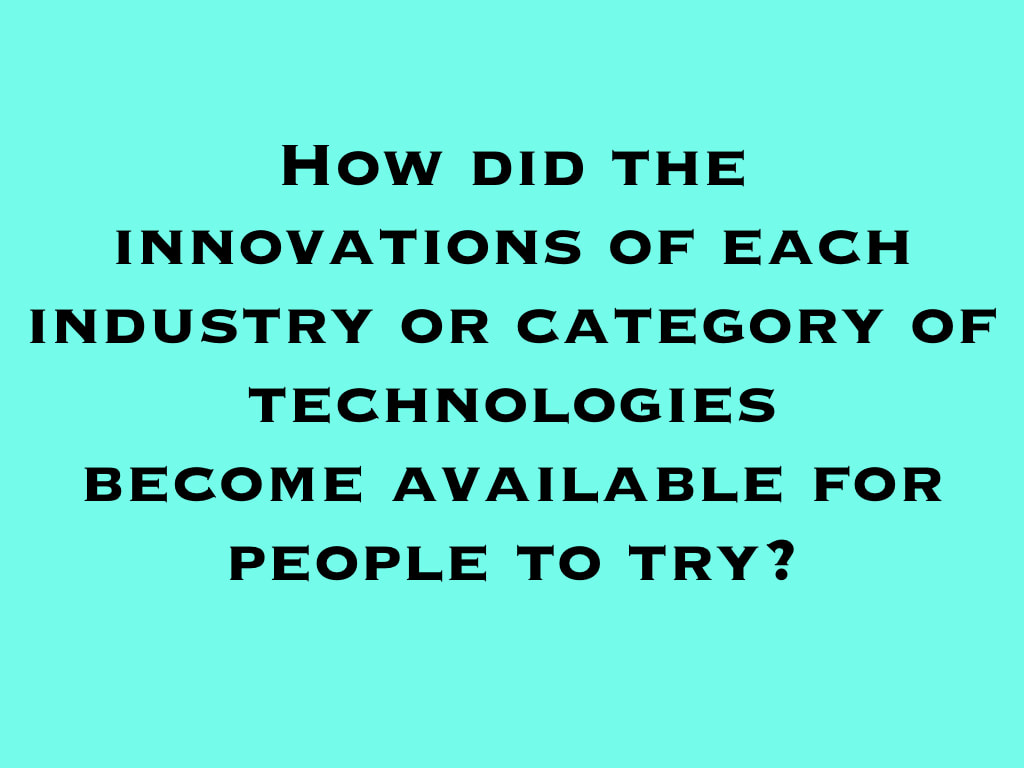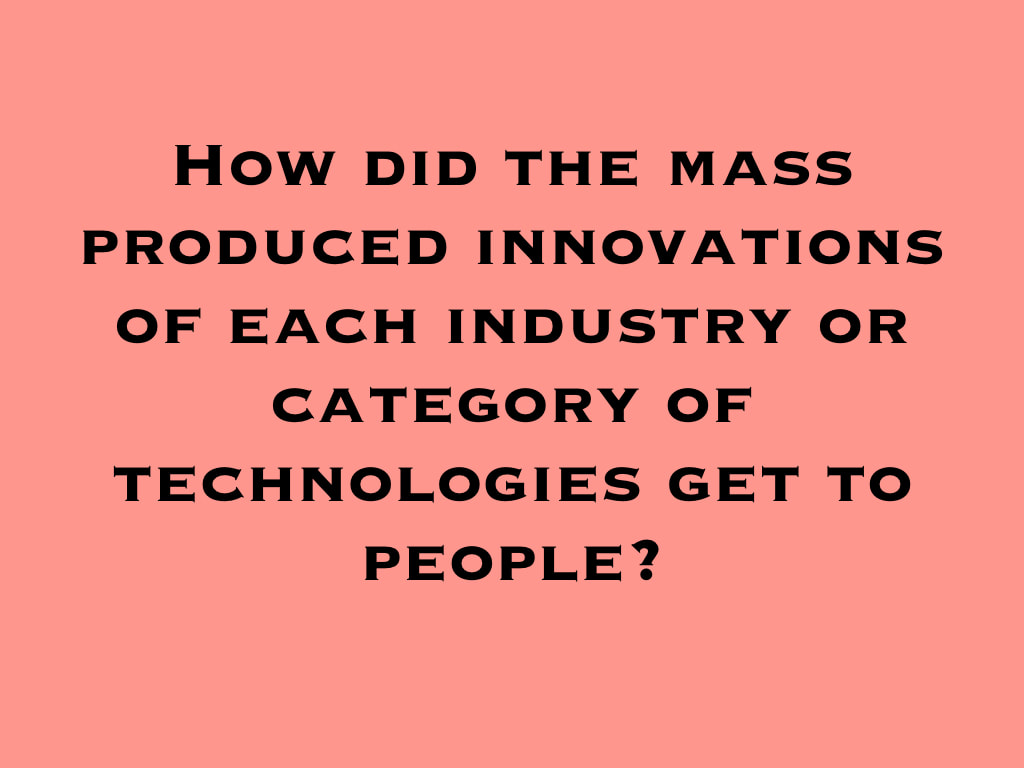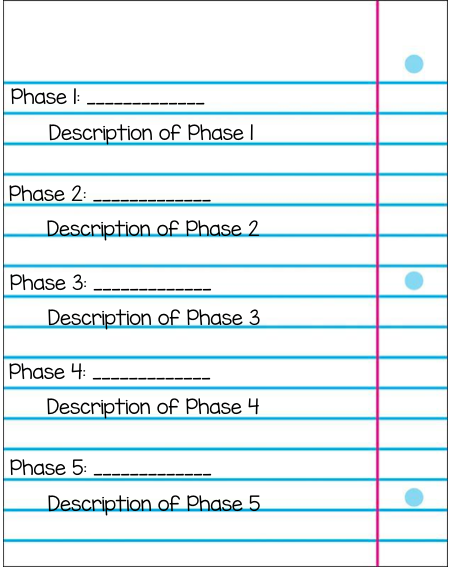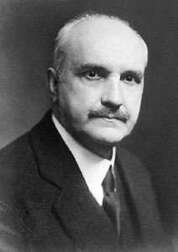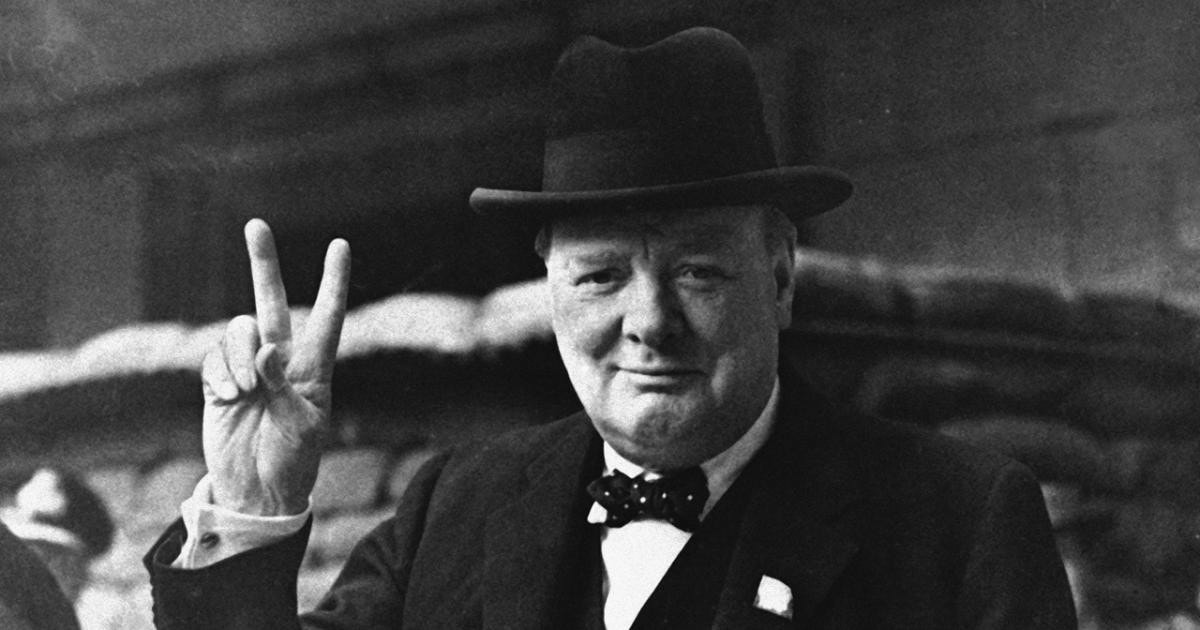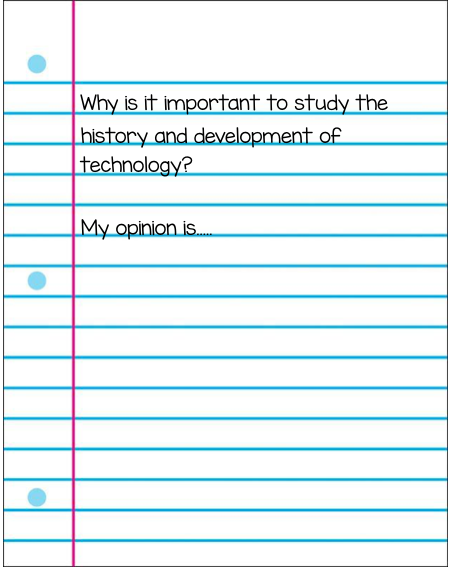CODING INNOVATIONS
LESSON 2: THE HISTORY OF TECHNOLOGY
TODAY'S MISSION
|
ACTIVITY 1: WHAT DO YOU KNOW ABOUT IT?
DO THIS ACTIVITY AS SOON AS YOU ARRIVE TO CLASS. DO NOT WAIT FOR OTHERS TO ARRIVE!
|
Click on the Google Classroom Icon to the right to go to our class discussion forum. For this second lesson, you will have to join the classroom. The code is on a card in your team bucket. Answer the Lesson 2 question in the discussion forum. You will have two minutes to answer the question. The question you will answer is below. When you are finished go on to the Innovations Journal Instructions.
When you hear the word technology, what kinds of things do you think of?
|
ACTIVITY 2: CAN YOU IDENTIFY IT?
On the first page of your Innovations Journal, title your entry. Look at the example below.
This second activity is going to help you define the word technology. Look at the slides below. You will have 3 minutes to do the following look through the pictures in the slides on your own and make a list in your Innovation Journals, like the example given above, of all the pictures that show technology. After 3 minutes, I will call time.
You will now have 5 minutes to share your list with your partner. Discuss why you believe your choices are technology and why the other items are not. If you have one listed that your partner does not circle it. Be ready to explain your reasoning for choosing the ones you did and not choosing the ones you didn’t. After 5 minutes, I will call time.
ACTIVITY 3: CAN YOU EXPLAIN IT?
You now have 3 minutes to set up the title like the example given below, in your Innovation Journals. Then, in your own words, define the word technology. After I call time, you will share your definitions with the class.
ACTIVITY 4: CAN YOU BREAK IT DOWN?
You already know what a timeline is. You have probably used or even created a timeline in your history class. In this activity, you will work in your pairs. Each pair of students will be assigned a different topic involving technology. You will be given a timeline organizer like the ones below for each of you to glue into your Innovation Journals. Together, you will go through each picture in the History of Technology Timeline and create a timeline of your topic only. Write down the year and the invention or innovation in the correct order. If you are unsure of what a type of technology is, you can click on the slide. It is a link to a site that will give you information about that technology. Look below this timeline for your assignment and further instructions.
|
|
You will have 15 minutes to read these instructions and complete the activity. Each pair will have one category to focus on. Your assignments are listed below. Follow the instructions. You should use all the spaces. There will be more than you have spaces for. Choose the ones you feel are the most important. Be able to explain why you felt these were the most important and why you thought the ones you did not include to be less important.
GROUP 1Agricultural and Farming Technologies are any tools, instruments, machines, vehicles, ideas or other developments that deal with growing or harvesting crops and raising livestock or storing or transporting crops and livestock.
|
GROUP 2Biomedical and Assistive Technologies are any tools, instruments, machines, vehicles, ideas or other developments that deal with medicine, health, life science, or any item that is used to correct a physical problem or health issue.
|
GROUP 3Communication, Computer, and Information Technologies are any tools, instruments, machines, devices, ideas or other developments that deal with communicating with others, wireless communications, using computers or devices with computer technology, or finding information.
|
GROUP 4Energy, Power, and Fuel Technologies are any tools, instruments, machines, devices, ideas, systems, materials, or developments that deal with producing energy or using power or electricity. It also includes any materials that are used in producing fuel or creating power.
|
GROUP 5Food, Fashion, Domestic, Media, Arts, and Entertainment Technologies are any tools, instruments, machines, devices, ideas or other developments that deal with producing, packaging, or selling food; new materials or clothing styles; things used to save time or make things easier in daily or home life; and anything regarding television, movies, or news.
|
GROUP 6Infrastructure, Construction, and Urban Development Technologies are any tools, instruments, machines, devices, ideas, materials, buildings, structures or other developments that deal with all the things a city, town, state, or country needs to function; anything to do with construction and city systems; and anything involved in making a city beautiful or convenient for its citizens.
|
GROUP 7Instruments, Tools, and Mechanical Technologies are anything used to aid people when weighing, measuring, constructing, repairing, seeing, or hearing and any type of machine, including simple and complex machine.
|
GROUP 8Marketing, Advertising, Business, and Finance Technologies are anything to do with planning, promoting, production, distribution, and managing the production and sales of a product and anything that adds in banking, investments, or money management.
|
GROUP 9Materials, Chemicals, Mining, and Environmental Technologies are anything to do with making, discovering, or using new substances and chemicals; anything to do with mining or drilling substances from the ground ; and anything to do with protecting or managing the environment.
|
GROUP 10Production and Manufacturing Technologies are any tools, instruments, machines, devices, ideas or other developments that deal with producing, packaging, distribution, or selling of any product and any developments or changes in methods to make mass production more efficient.
|
GROUP 11Space, Weather, Weapons, and Defense Technologies are any tools, instruments, machines, devices, ideas, vehicles, structures, or other developments that deal with going to space, used in space, or space exploration; anything used to help predict, prepare, measure, or determine weather or other atmospheric conditions; and any technologies developed to help the military or used in the defense of the nation.
|
GROUP 12Transportation Technologies are any tools, instruments, machines, devices, ideas, vehicles, structures, engines, fuel or other developments that deal with transporting people or goods from one place to another.
|
ACTIVITY 5: CAN YOU ANALYZE IT?
For this activity, you will analyze the timeline you created to find patterns, connections, and correlations. First, glue your timeline inside your Innovation Journal on the next empty page. On the next page, set up your title like the example given. You will have 10 minutes do this assignment with your partner. Analyze your timelines together. Answer these questions in your journals:
- How did your industry or topic of technologies start?
- How did the technologies in your industry or topic change from the beginning until now?
- At what point did your industry or topic become relevant and why do you think so? In other words, when did people begin to buy the technologies in your industry or topic? How did the technologies become things people actually used?
ACTIVITY 6: CAN YOU PUT IT ALTOGETHER?
There is a common phrase that historians say. This phrase is, “History repeats itself.” Historians say this because there are always patterns in the way things happen or develop in history. When historians study the development of technology, they identified five distinct phases of technology development in an industry or category of technologies. These phases show the direct impact that technology development has had on people and the economy and how people and the economy directly impact the development of technology.
Let’s see if you can put all that you learned together to discover the five phases of technology development.
|
QUESTION 1:
|
QUESTION 2:
|
QUESTION 5:
Set up a title for your Innovation Journals like the example given. Write down the five phases of technology development and briefly describe each one.
ACTIVITY 7: THINKING ABOUT WHAT YOU LEARNED

Each man was addressing a different audience in a different time, but the meaning of the phrase is the same. It means, study the past to avoid the same mistakes in the future. It was innovated to meet a need. That need was to give meaning to the audiences in the time periods each man was addressing. This phrase illustrates technology development beautifully, because for technology to develop, people had to study the original invention, identify the mistakes, and either avoid or fix those mistakes in the innovation. This is an important lesson for the innovators of the future, like yourselves, to understand as you endeavor to develop technology to meet people’s future needs and solve future problems.
Set up a title in your Innovations Journal like the example. Write today’s Question for Ponder: Why is it important to study the history and development of technology? Read the passage, “The Innovation of a Phrase.” Using what you learned today and what you read in this passage, form your own opinion of what the answer is to the question. Write your opinion under the question.
MISSION ACCOMPLISHED
|
